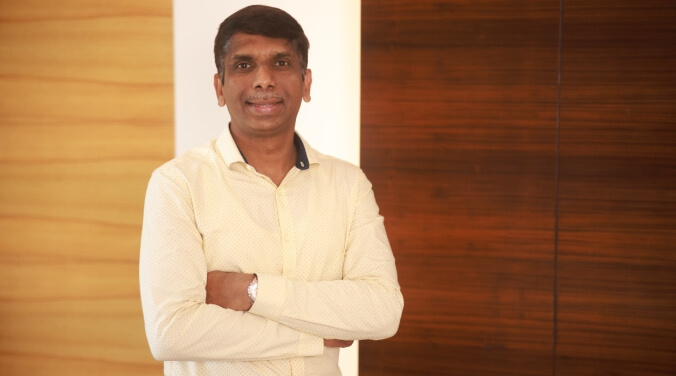Tamso Ma Jyotirgamaya, Asatyma Satyagamaya and Mrityuma Amritamagamaya,’ this is a wonderful Vedas prayer that says, ‘O Divine, lead us from darkness to light, from untruth to truth and from death to life eternal.’
Education is for the very purpose which ought to help people grouping in the darkness see the light, know the truth and be led on the path of fulfillment. As early as the 5th and 6th Centuries, in India, we had Universities like Taxila (Takshashila) and Nalanda that stood like the lighthouse guiding generation on the path to fulfillment and prosperity.
Before this, 5000 years ago, we had the Gurukul system of education where the student and teacher used to stay together till the student learnt all that the teacher wanted to impart to him and prepare him for the world.
Most of these universities and educational institutes were focused on teaching religious dictates and included mathematics and logic subjects. It was in the intermediary years that our education system was influenced by the English people when India was under the dominance of Colonial rule.
On the positive side, the British education system helped people think logically, that finally led to banishing many social evil practices. On the negative side, the British system encourages rote learning to be reproduced in the examination. It has very less scope for creativity. We have not much been able to evolve from the British Education system introduced in the 19th Century.
Today many of our Educational institutes and universities are still heavily influenced by this education system. ‘If you don’t change what you are doing today, all of your tomorrows will look like yesterday.’ Jim Rohn.
To help Indian Universities be the lighthouse that guides the younger generation on the path of fulfillment, here are some of the things that need to be addressed:
- Education a doorway to character building: Education has to evolve from just a license in hand to get a job to character building for the younger generation. In many instances, we are guilty of imparting education in a way that can be described as ‘putting the cart before the bullock.’ Education should be built on the philosophy that ‘It is not what one gets, but what one becomes that is more important.’
Once we build a capable younger generation, the students will automatically get all the attractive opportunities they desire.
Today’s education system is more focused on helping students to be a job–ready. It is not wrong to do so. But we have to remember that getting a job is not all in all. It is not the only purpose of education. This philosophy that we have come up with can stunt the development of students from realizing their full capacity. Our education system is guilty today of duplicating graduates who all have lost their individuality and never realized their full potential. University should be a place where students discover their so-called passion and develop the necessary skills to bring them forth for the benefits of society.
Today, a student who goes to school, college or university looks to his teachers and professors as people who have all the answers. The student feels that one of his primary duties is to rote all the answers given by the teacher and reproduce them in the examination. Today we evaluate the student based on how well they can duplicate the answers in the examination. Undoubtedly, this trend of getting ready-made answers has discouraged innovative thinking, research bent approach and out-of- the-box thinking.
We are far behind in the Global Innovation Index compared to other countries like China or America. As of the 2021 survey, India stands at 46th rank. However patents filed in India have grown considerably, per the World Intellectual Property Organization (WIPO). In 2021, 58,502 patents were filed in our country, but the number is still a fraction of the 5.30 lakh patents granted in China and 3.52 lakh patents granted in the USA, according to the Economic Survey. It also noted that 1.79 lakh patents were granted in Japan in 2021, and 1.35 lakh were granted in South Korea, respectively, as of 2020.
The panacea for this is to help our students not with the right answers but the right questions. It is to help them with the necessary environment to help them evolve the answers to the problems. One grows strong when he struggles with problems for a longer period, and we have to teach students to grapple with issues for a long. In our classroom, labs, and workshops, we need students who ask questions, who are willing to grapple with the questions and help the answers evolve. We would do well if our educational institutes and universities had the tagline – “We welcome and entertain questions here!”
- Education should help evolve from a dualistic to non-dualistic mindset: These are the times when students specialize in an area of their interest. We have now moved from specialization to super- It is not rare to find many people around us who have a double doctorate and all these things are surely good but not enough.
Many educational institutes and universities give us the idea that one discipline is separate from the other. This encourages a dualistic mindset among our students. So a student of STEMM (Science, Technology, Engineering, Mathematics and Medicine) will never feel an affinity towards a student of Liberal Arts or Literature.
So, if I am a Master’s in Literature, I feel that I am not cut out for technology and have nothing to do with it. But the world out there doesn’t work that way. The inter-disciplinary approach is the watchword when it comes to being effective. Gyan Nagpal says, “Breakthrough innovation occurs when we bring down boundaries and encourage disciplines to learn from each other.”
It is a welcome change to see that many universities in India and abroad are now opening up to this new avenue of inter-disciplinary approach. Hasso Plattner, the co- founder of SAP software and businessman, says about the educational approach at Stanford, “At Stanford, we teach design –thinking- that is, we put together small interdisciplinary groups to figure out what the true needs are and then to apply the art of engineering to serve them.” When our students learn to see the world that is woven together as a whole from different parts, when they know that synergy is the outcome of the sum of smaller parts working together, then they can realize the full potential of coming together, respecting each other and working together for a better tomorrow.
This quote from Henry Ford is well known: “Coming together is the beginning, staying together progress and working together a success.” We all know the wonders of the founder of Apple Company, Steve Jobs, who also learnt Calligraphy at Reeds College. He pursued this after he dropped from his regular course in Reeds. Learning Calligraphy helped him incorporate the beautiful typography in Apple computers and eventually all computers caught up with the same. This is an example of an interdisciplinary approach that a non–dualistic mindset can encourage to take and to produce wonders.
Conclusion:
Indian universities have a lot of potential and opportunities to be the guiding light in shaping a promising future for the world. We need to re-think our approach to education. We need to learn, de-learn, and re-learn so that we are not burdened with the old, and we evolve with time to be equipped and afford the best to our students. Like the Sigmoid curve that indicates constant learning and invention for survival, Indian universities must evolve before they can effectively carve out a path of fulfillment and shape a promising future for the world.
About Author-
Mr. Sohan Tiwade Professional Speaker & Corporate Soft Skills Trainer, The Edge Asst. Prof. Sanjay Ghodawat: University, Kolhapur






